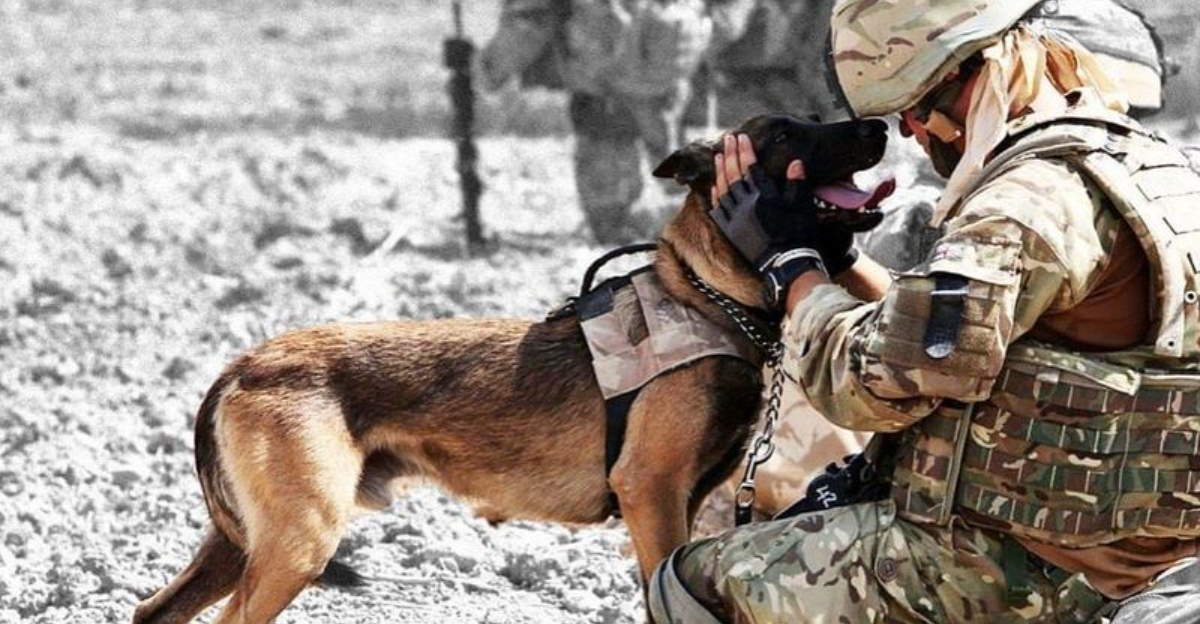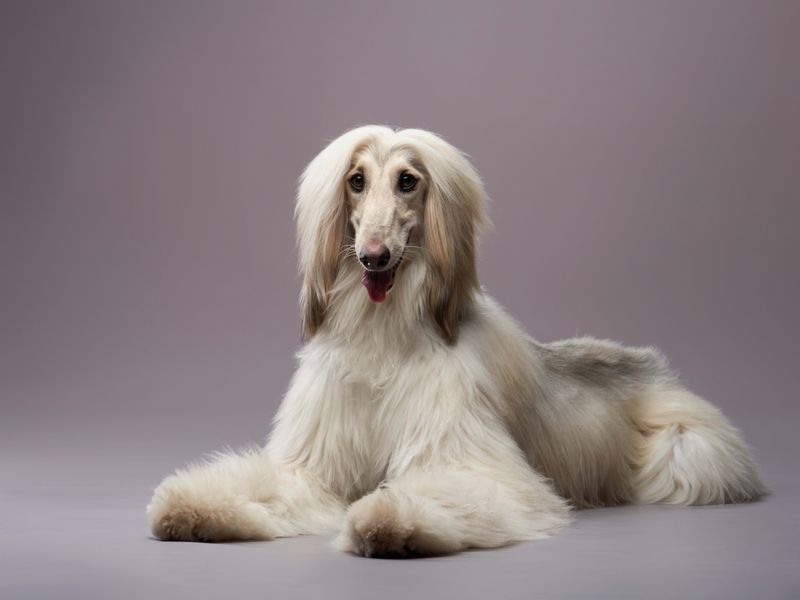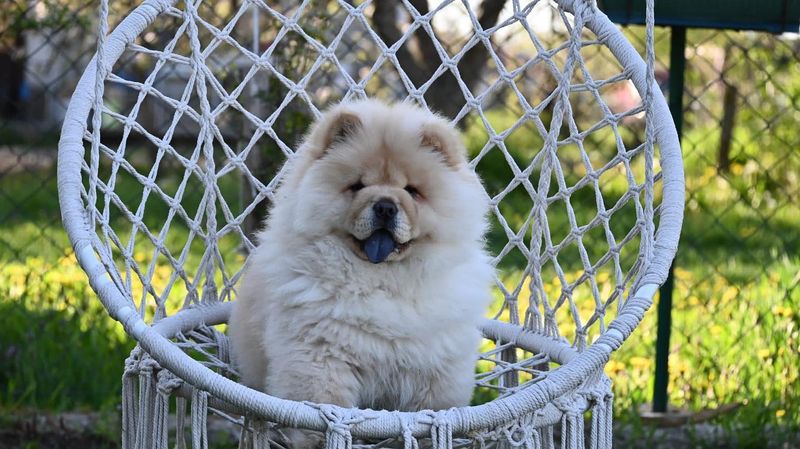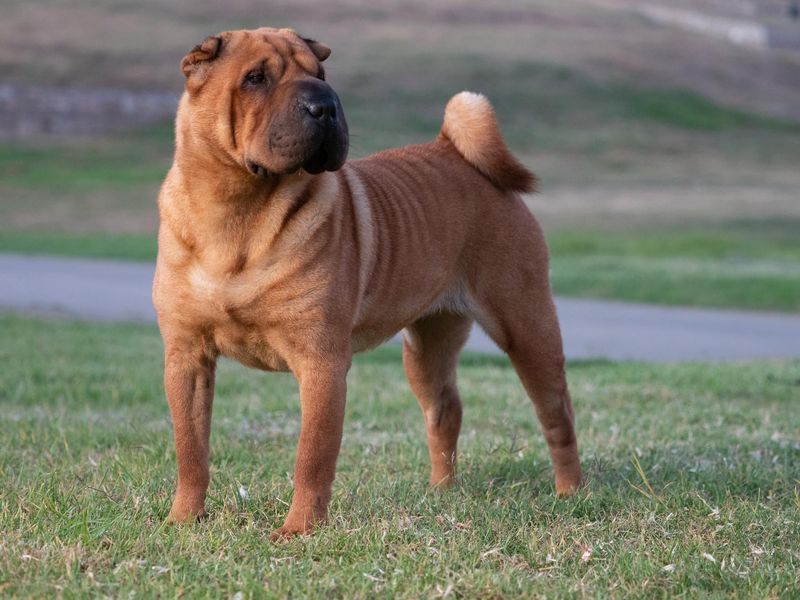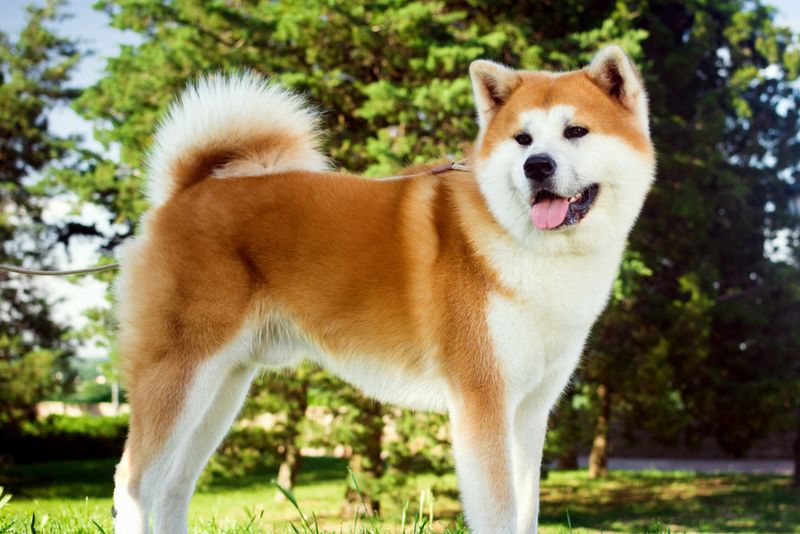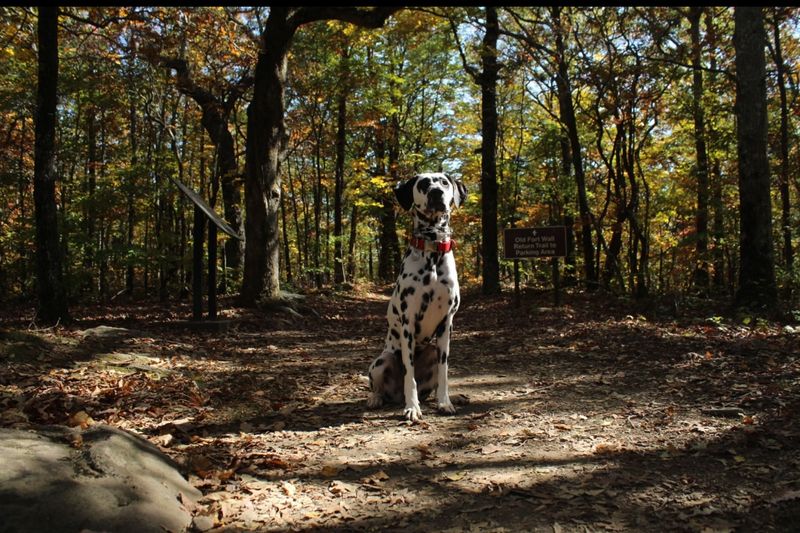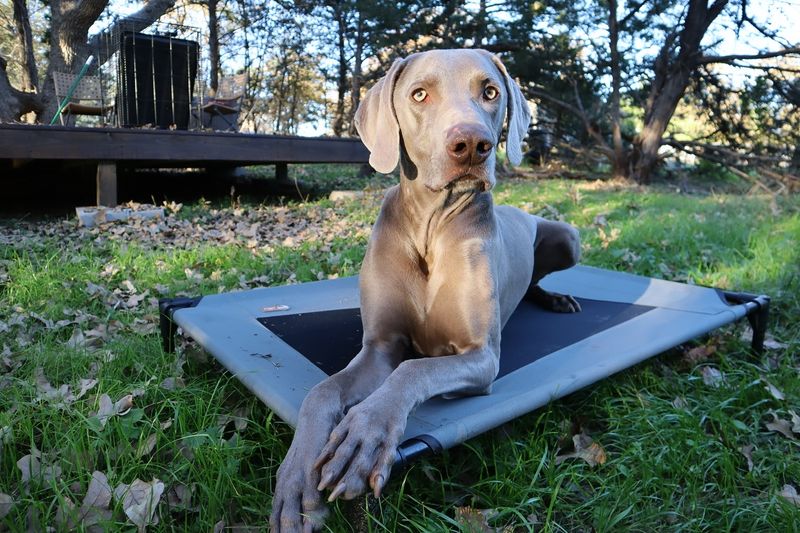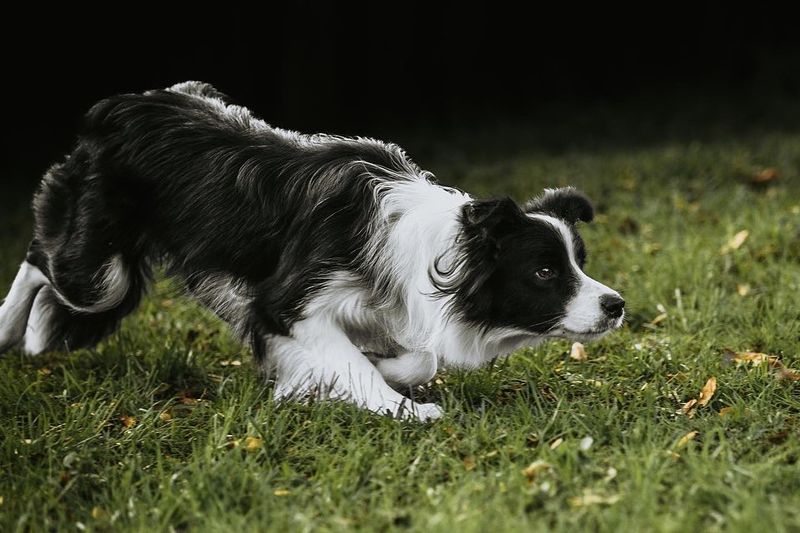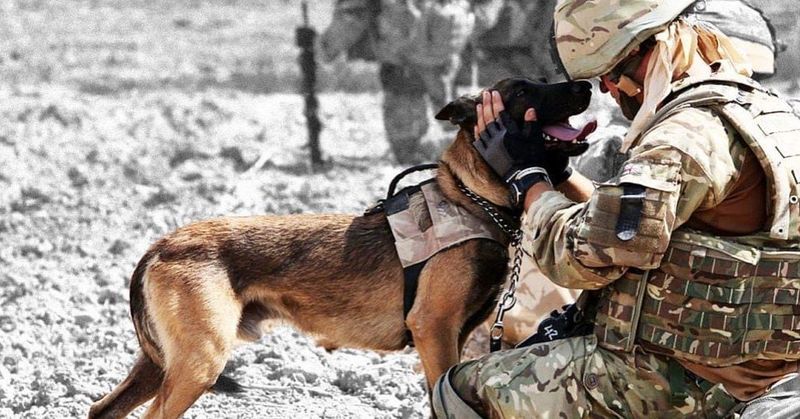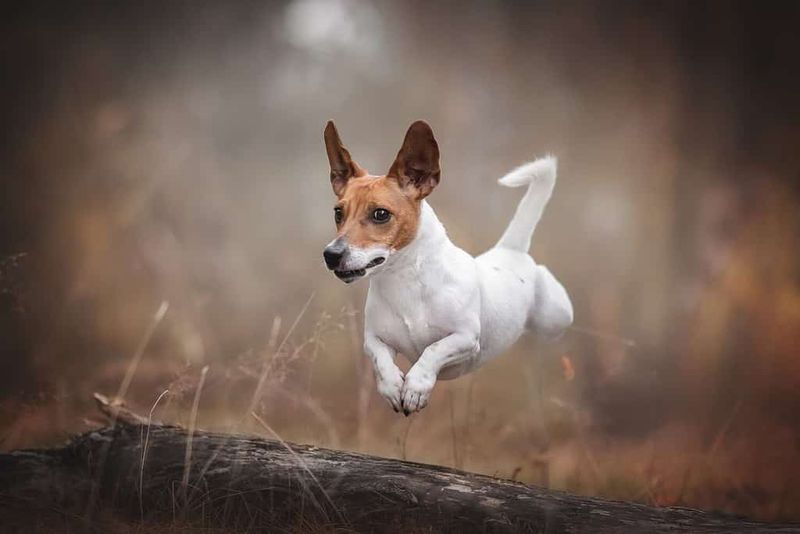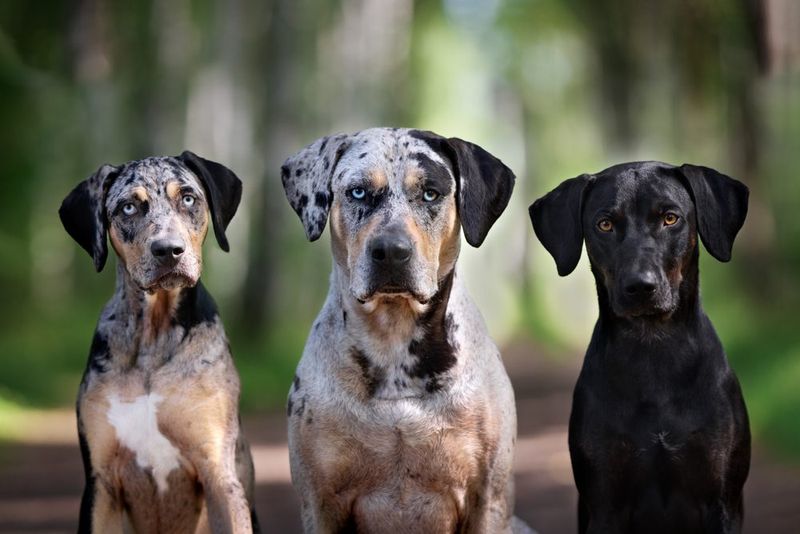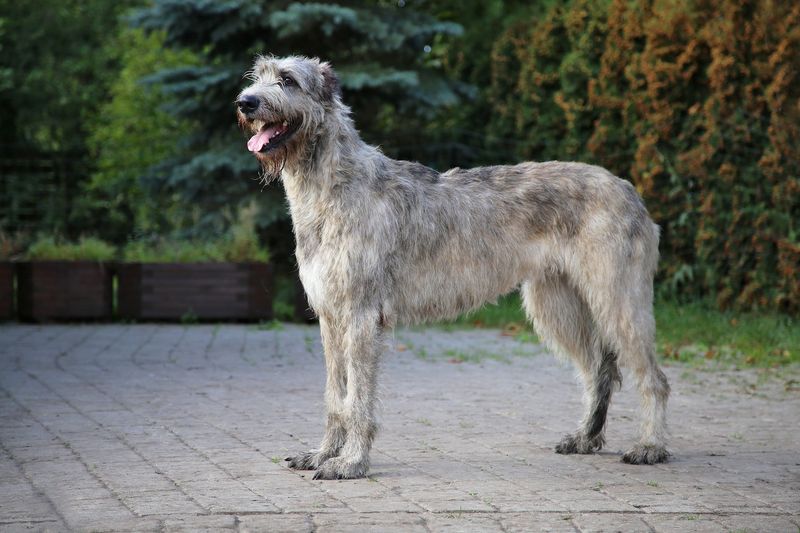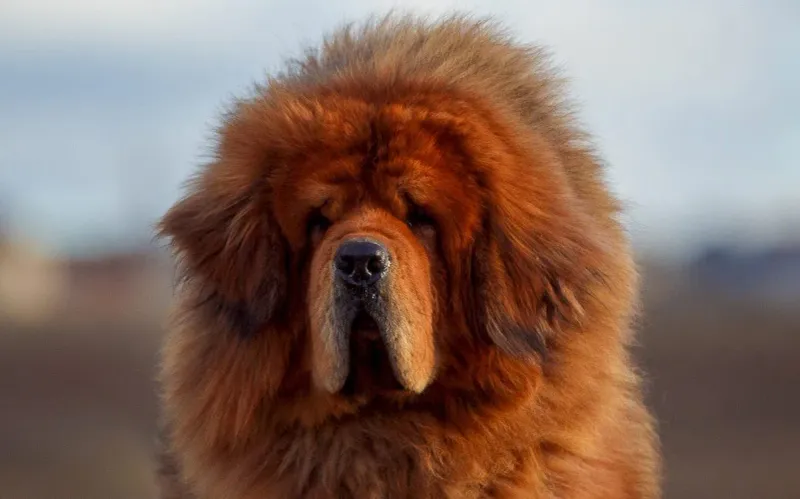Dogs are often known as man’s best friend, but not all breeds are easy to handle. Some of the most beautiful dog breeds come with their own set of challenges, requiring experienced and dedicated owners. This article explores 17 stunning dog breeds that can be surprisingly difficult to manage, highlighting their unique characteristics and what makes them so special.
Afghan Hound
The Afghan Hound, with its regal bearing and long, silky coat, is a sight to behold. This breed is known for its independent nature, often likened to a feline in its aloofness. Training an Afghan Hound requires patience and creativity.
Their hunting instincts are strong, so a secure yard is essential. Despite their elegant appearance, Afghan Hounds need regular exercise to be happy and healthy. For those willing to invest the time, the Afghan Hound offers a unique companionship experience.
Did you know? This breed is one of the oldest, tracing its roots back thousands of years.
Chow Chow
The Chow Chow, with its lion-like appearance and blue-black tongue, is both intriguing and challenging. Known for its aloof demeanor, this breed often bonds closely with one person but remains reserved with strangers.
Chow Chows require early socialization and consistent training. They are fiercely independent and may not respond well to typical training methods. Grooming is another commitment, as their thick coat demands regular care.
Fun fact: The Chow Chow is one of the few breeds with a blue-black tongue, a trait shared with the Chinese Shar-Pei.
Shar-Pei
With its signature wrinkles and hippopotamus-like face, the Shar-Pei is unmistakable. While their appearance is endearing, Shar-Peis are known for strong-willed and sometimes stubborn behavior.
Training a Shar-Pei requires patience and consistency, often appealing to their sense of independence. Early socialization is key, as they can be wary of strangers and protective of family.
This ancient breed has a fascinating history as a guard dog in China, adding to its mysterious allure. Proper care of their skin folds is essential to prevent irritation.
Siberian Husky
The Siberian Husky, with its striking blue eyes and thick fur, looks like it stepped out of a winter wonderland. This breed is full of energy and thrives in active environments, often participating in sledding and other winter sports.
Huskies are known for their independent nature and can be escape artists if left unsupervised. They require a lot of physical exercise and mental stimulation to prevent boredom.
Fun fact: Siberian Huskies were originally bred by the Chukchi people of Siberia to pull sleds over long distances.
Akita Inu
The Akita Inu, originating from Japan, is a symbol of loyalty and courage. With a thick double coat and curled tail, they are both beautiful and dignified. However, their strong-willed nature can make handling challenging.
Akitas are known to be territorial and protective, often reserved with strangers. Socialization from a young age is important to encourage balanced behavior. Their independent spirit requires a firm yet gentle approach to training.
Historically, Akitas were used for hunting large game in the mountainous regions of Japan.
Dalmatian
Known for its unmistakable black spots, the Dalmatian is both eye-catching and full of energy. This breed thrives in active households and requires plenty of exercise.
Dalmatians are intelligent and need mental stimulation to prevent boredom. However, their independent streak can lead to stubbornness during training. Consistent, positive reinforcement works best for this playful breed.
Did you know? Dalmatians have a history as carriage dogs, known for running alongside horse-drawn carriages, which contributed to their high-energy levels.
Basenji
The Basenji, often referred to as the “barkless dog,” is known for its unique yodel-like vocalizations. With a sleek coat and expressive face, this breed is agile and alert.
Basenjis are highly intelligent but can be aloof, often displaying a cat-like independence. Training requires creativity and patience, focusing on engaging their curiosity.
Originating from Central Africa, the Basenji was traditionally used for hunting, highlighting their keen senses and agility. Their minimal grooming needs make them appealing, but their independent nature requires experienced handling.
Weimaraner
The Weimaraner, with its sleek silver coat and striking amber eyes, is a picture of elegance and strength. Bred for hunting, they are energetic and require ample exercise.
Known as the “gray ghost,” Weimaraners are highly intelligent and thrive on mental stimulation. However, their strong bond with family can lead to separation anxiety if left alone for long periods.
This breed’s loyalty and enthusiasm make them wonderful companions for active owners who can meet their exercise and training needs.
Fun fact: Weimaraners were once exclusive to the noble class in Germany.
Australian Shepherd
Australian Shepherds, with their vibrant merle coats and bright, intelligent eyes, are a delight to watch in action. Known for their herding skills, they are energetic and thrive in active environments.
Training an Australian Shepherd requires consistency and creativity, as they are quick learners but can become bored with repetition. Their strong herding instincts may lead them to “herd” family members or other pets.
These dogs excel in agility and obedience competitions, reflecting their intelligence and eagerness to learn. Regular mental and physical stimulation is key to a happy Aussie.
Border Collie
Renowned as one of the most intelligent dog breeds, the Border Collie is a workaholic at heart. With a focused gaze and unmatched agility, they excel in herding and obedience.
Border Collies require a significant amount of physical and mental exercise, making them suitable for active families or working environments. Their high energy levels can be challenging for those unprepared for their needs.
Did you know? The Border Collie originated from the border region between England and Scotland, where they were bred for their exceptional herding abilities.
Alaskan Malamute
The Alaskan Malamute, with its powerful build and thick coat, resembles a wolf but has a playful and affectionate nature. Bred for pulling heavy sleds, they are strong and require regular exercise.
Malamutes are known for their stubbornness and independent thinking, often challenging inexperienced owners. Training requires patience and consistency, focusing on positive reinforcement.
Their friendly disposition makes them great family pets, but they need space to roam and play. Malamutes have a rich history in Arctic regions, valued for their strength and endurance.
Belgian Malinois
The Belgian Malinois, with its athletic build and keen intelligence, is a favorite among military and police forces. Their high energy levels and trainability make them exceptional working dogs.
However, their need for mental and physical stimulation can be overwhelming for inexperienced owners. Malinois thrive in environments where they have a job to do and space to run.
Training should be consistent and positive, tapping into their eagerness to learn and work. This breed’s loyalty and dedication are unmatched, but they require an owner who can meet their demanding needs.
Jack Russell Terrier
Small in size but big in personality, the Jack Russell Terrier is a bundle of energy and curiosity. Known for their tenacity and intelligence, they excel in agility and obedience sports.
Jack Russells require an active lifestyle and plenty of mental stimulation to keep boredom at bay. Their hunting instincts can lead to digging and chasing behavior, which may surprise some owners.
Training should focus on channeling their energy positively, using consistency and encouragement. Despite their challenges, Jack Russells offer an adventurous spirit and loyal companionship.
Catahoula Leopard Dog
The Catahoula Leopard Dog, with its striking merle coat and diverse eye colors, stands out in any crowd. Bred for hunting wild hogs, they are energetic and require plenty of exercise.
Catahoulas are intelligent and independent, often developing strong bonds with their families. Training requires patience and creativity, focusing on positive reinforcement.
Their protective nature makes them excellent watchdogs, but socialization is key to prevent wariness of strangers. This breed thrives in active households that can meet their physical and mental needs.
Irish Wolfhound
The Irish Wolfhound, known for its towering height and gentle demeanor, is both impressive and endearing. Despite their size, they are known for being gentle giants, often affectionate with family.
Wolfhounds require space to roam and regular exercise to maintain their health. Their size can be a challenge for those unprepared for their needs, including the cost of feeding such a large dog.
Historically, Irish Wolfhounds were used in hunting wolves, which is reflected in their name. Their noble presence and gentle nature make them cherished companions.
Kangal
The Kangal, with its powerful build and protective instincts, is a devoted guardian of livestock. Known for their loyalty and courage, they are revered in their native Turkey.
Kangals require strong handling and socialization to manage their protective nature. Training should focus on gentle leadership and positive reinforcement to nurture their intelligence and loyalty.
This breed thrives in open spaces where they can fulfill their guardian role. Despite their serious demeanor, Kangals can be gentle with family, forming strong bonds with those they protect.
Tibetan Mastiff
The Tibetan Mastiff, with its imposing size and thick mane, exudes a sense of majesty and strength. Bred as a guardian of livestock in the Himalayas, they are fiercely independent and protective.
Mastiffs require experienced handling and early socialization to encourage balanced behavior. Their aloof nature with strangers can be a challenge for those unprepared for their protective instincts.
Training should focus on positive reinforcement, nurturing their intelligence and loyalty. Despite their challenges, Tibetan Mastiffs offer a regal presence and devoted companionship to those who earn their trust.
